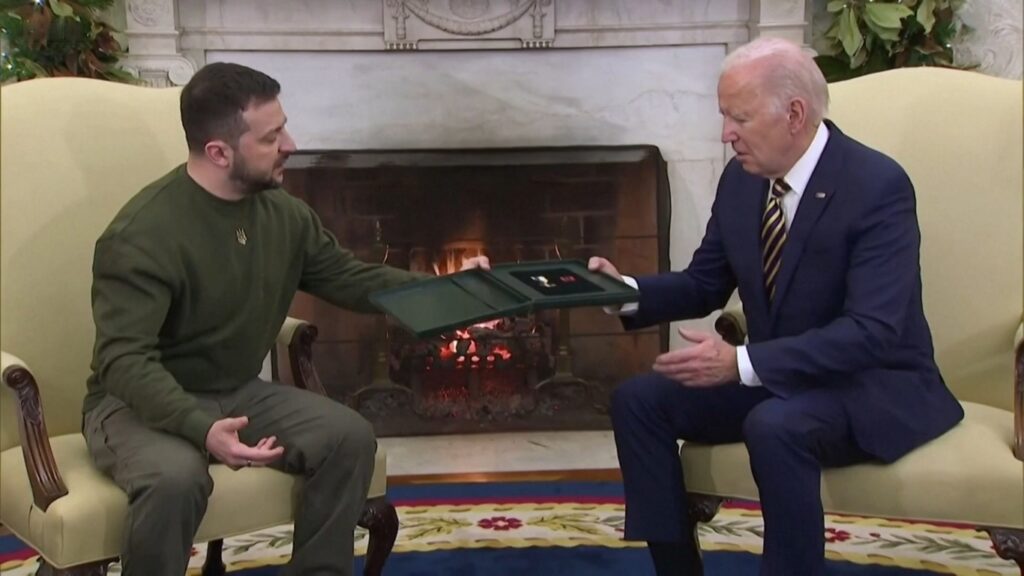With the Russia-Ukraine war reaching the year mark, the article analyses its present status, latest developments, and possible outcomes in 2023.

The 24th of February 2022 was the most unstable day for Europe and the world after World War II, as Russia began its ‘special operation’ in Ukraine. 2022 as a whole saw various developments, from early negotiations in Belarus to a counter-offensive, the grain deal to the Crimean attack, Russia taking 4 provinces, the Kherson retreat to the notable event of President Zelensky’s visit to Washington during the last week of December. This was special as it was the first visit by President Zelensky outside Ukraine since the special operation began.
Developments on the Russian side
As the war crosses 300 days with no sign of negotiations and a continued offensive across Ukraine, the situation on the ground is complicated. The present zone of conflict has been towards the areas of Bakhmut, Odesa, and Kyiv, as well as Kherson and its suburbs. Russia has increased its offensive and changed the pattern and mode of warfare. Earlier, it was more dependent on the likes of cruise and ballistic missiles, which put a huge economic strain on Russia, and as a result, now it has shifted to the likes of Geran 2 and Shahid 136 drones, which are Iranian-produced drones, but Tehran continues to reject giving any drones or Arsenal to Moscow. The inclusion of drone warfare has been a game changer for Russia, which has not only increased the frequency of attacks but is also cost-effective. As a result, Russia’s dependency on drones has increased since October, and by doing so, they have increased their offensive in Kyiv and made themselves aerially superior to Ukraine.
In the last week of December, Russia struck Ukraine twice, once at midnight of the New Year, and both strikes were done primarily by drones. Along with it, Russia also increased its logistics over Ukraine, which earlier was problematic and forced them to withdraw from Kherson in November and brought major upsets in the autumn of 2022. Many of these increased after the coming of General Sergei Surovikin, who triumphed for the Russian cause in Syria and Tajikistan, and under whose helm Russia looks more pragmatic and purposeful in its special operations in Ukraine.
Developments on the Ukrainian side
Ukraine since the start has been given aid and assistance from NATO. Billions of dollars in the form of military and humanitarian aid have been poured into Ukraine since February 24, 2022. Moreover, the Ukrainian army has been trained by Western experts since 2014 on the sidelines of the Minsk agreement, and as a result, Ukraine has been able to create fortified zones across Ukraine, troubling Russian advances. The game changer has been the MLRS system supplied by the US to Ukraine, which can launch long-range missiles and nullify the Russian threat.
The interesting point in the conflict came in December when President Zelensky visited Washington and received a warm welcome in the United States. President Zelensky also addressed the American Congress and asked for more assistance for Ukraine. The visit helped Ukraine get a Patriot missile system despite Russia’s misgivings about the same. The delivery of the Patriot missile system to Ukraine was debated in the US Congress about whether to give it to Ukraine or not because of its capabilities which can further prolong the conflict.
The Ukrainian authorities have said that when the war will complete one year on February 24, 2023, they want to bring a peace offer to Russia through the UN with its Secretary-General Antonio Guterres as a peace mediator. This looks promising, but the road to achieving it won’t be easy.
Problems in the Peace Agreement
The bigger problem in achieving peace between Russia and Ukraine is that there are differences of opinion and offers with no common ground.
Russia’s offers for peace:
1) The Russian offer of peace asks Ukraine to accept the reality in Donetsk, Lugansk, Kherson, and Zaporizhzhia (which, after Referendum, became Russian territory)
2) Immediate end to arms supplies by the west to Ukraine
3) Ukraine’s Neutrality between the West and Russia
Ukraine offers for peace:
1) Complete withdrawal of Russian troops from all areas of Ukraine
2) Taking back the four occupied territories and Crimea from Russia
3) Trial of Russian military personnel as war criminals in Ukraine
The biggest problem in this is the lack of commonality between them. There has been a lack of will on either side to accept any of the demands. As the world enters 2023, the world wants to forget the memories of conflict but this requires a ‘global will’ as the war has created a crisis in various sectors including energy, food and others. With the G-20 presidency under India, it is both an opportunity and a challenge for New Delhi to navigate the world in tough times.
(The author is a post-graduate student in International Relations at Kalinga university, Raipur. The opinions expressed are the author’s own)
Aayush Pal is a freelance writer on contemporary geopolitical developments. The views expressed in his work are entirely his own.

Great insight. Eagerly waiting for G-20.